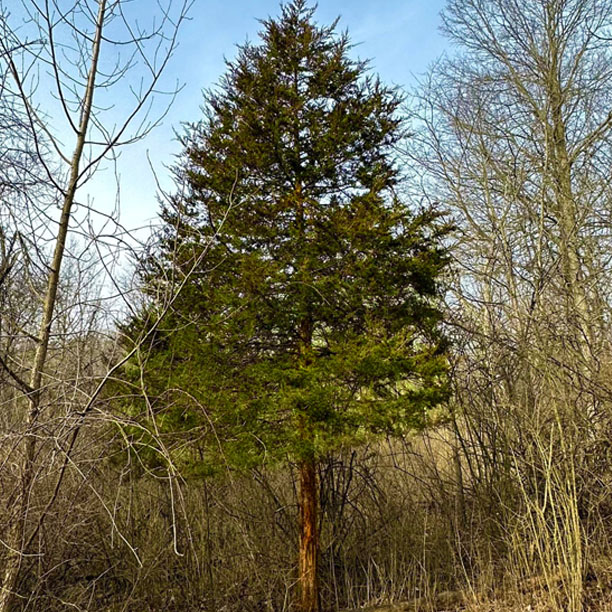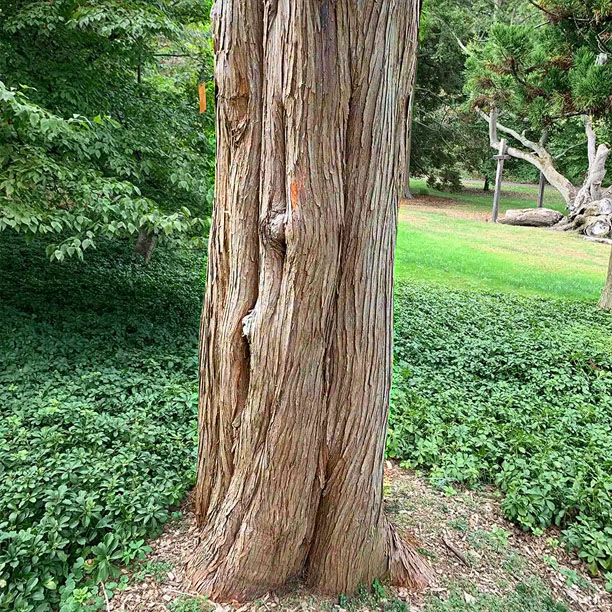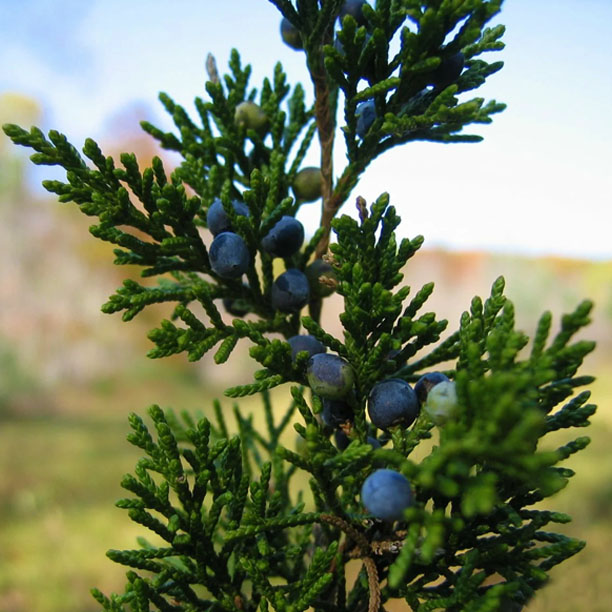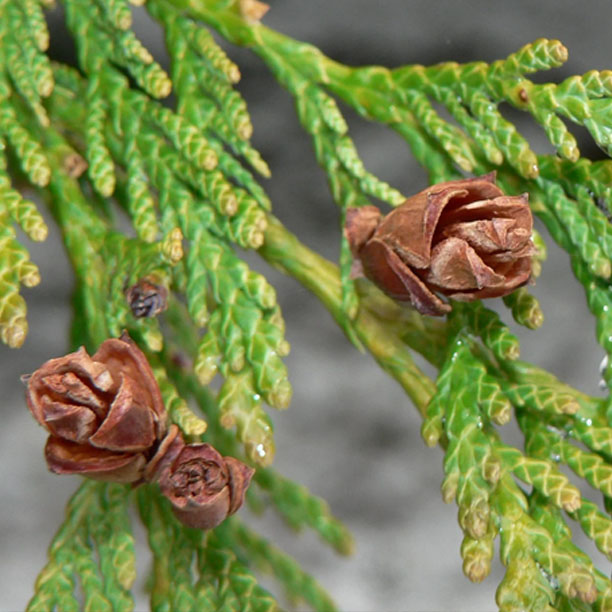Eastern Red Cedar
How To Identify
The Eastern Red Cedar is an evergreen with scaly leaves and reddish-brown bark that grows in strips and blue berry-like cones. This tree is actually a part of the juniper family.
The leaves are identified as soft, scale-like blueish-green or dark green sprays. They grow tightly together on their stems and keep their color through most of the winter. The needle leaves may turn a copper-brown color in winter. Bark on the eastern red cedar trunk and twigs is thin with a gray to reddish-brown color. The red cedar has peeling bark that shreds in long thin strips. The scaly bark can appear somewhat smooth on immature red cedars, and the grayish bark exfoliates, revealing red bark.
These trees are either male or female. The flowers on a female tree are tiny greenish yellow inconspicuous flowering buds similar in size to the male flowers. The male flowers are oval to egg-shaped and are around 0.06” (1.5 mm) long.
The small, blue cedar berries have a frosted appearance and grow abundantly on the tree. The blue edible berry-like cones have a better taste than juniper berries with a sweet pine-like flavor and eventually develop into cones. The cones are irregular egg-shaped and contain one to three seeds. They start producing seed-bearing cones after ten or 20 years; producing seed-bearing cones every two or three years.




Benefits
The wood, berries, and leaves are used for medicine. Cedar tea is packed with vitamin C for cold and flu season. People take Eastern red cedar for cough, bronchitis, joint pain (rheumatism), water retention, and flatulence. They also take it to improve appetite and digestion, and as a treatment for fungal infections and worms.
A poultice from the berries can be applied to the skin for wounds, rashes and fungal skin infections due to its antiseptic properties.
In manufacturing, Eastern red cedar is used as a fragrance for soaps, perfumes, and cosmetic; the oil is used as an insect repellant against moths, flour beetles, cockroaches, mosquitos, termites, and ants.
The berries of Eastern Red Cedar have a number of medicinal uses. A tea made from the berries has been commonly used for the treatment of coughs and colds, and to expel intestinal worms. Chewing the berries could also soothe mouth sores and ulcers.
How To Find
The eastern red cedar thrives in most soil conditions, and it easily spreads in open landscapes. It can be found normally along the edges of woodlands or in fields as it prefers a sunnier location. Being an evergreen, this tree’s leaves can be found year-round
Gathering
Gathering the leaves of the cedar for tea is a simple process of cutting off the ends of the branches. Eastern red cedar berries actually take 3 years to mature. And they’re considered ready to pick when they’re a darker blue. They do have a waxy white, protective coating, which can rub off to reveal a deeper color underneath. The bark can be peeled from the tree as a fire starter but we recommend only taking the loose pieces of bark to not damage the tree. Also cutting of branch tips will prevent growth for at least that season.
How To Use
The leaves and/or berries can be used fresh in teas. It is recommended to add them to water that has been heated and not bring them to a boil to retain as much of the nutrients as possible.
Preservation
Loose bark can be stored and kept dry. The leaves and berries can be dried and stored for later use.
To preserve the leaves or berries, place them into a paper bag, or on a screen (window screen or similar) and allow them to dry in a dry dark place with good airflow. They can also be dehydrated using very low or no heat in a standard dehydrator or freeze dried. Oven drying isn’t recommended as the heat can damage the medicinal benefits.